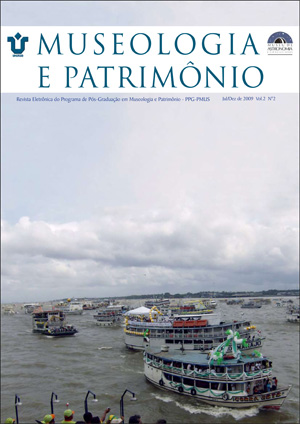The dragon and the city: legends from Ceará, Brazil
Abstract
This article discusses the relationship between Dragão do Mar [Sea Dragon] Center for Art and Culture (CDMAC), and Fortaleza’s cultural patrimony, taking as starting point the mythical narratives related to its name and location. Special emphasis is placed on the Center’s role on the preservation of the city’s memory and its historical and architectural patrimony. CDMAC was inaugurated in 1999, as part of a project to “modernize” Ceará through the increment of tourism activities. The building of a cultural center in city’s old harbor area intended to extent to it the requalifying process occurring on Iracema Beach. In the early 1900s, this neighborhood used to be occupied by elite housing and recreational uses. However, in the 1940 decade, the building of a new harbor on Mucuripe beach caused the rising of tides, which destroyed most of Iracema’s beach. The neighborhood’s symbolic creation/destruction/re-creation resembles the fate of Iracema, an Indian girl who is the main character of a novel published in 1865 by cearense writer José de Alencar. She brakes up with her people, in order to follow the colonizer Martin Soares Moreno. After being abandoned by him, she gives birth to Moacir, the first cearense. The plot of Alencar’s book is regarded by cearense intellectuals – including the authors of CDMAC project – as Ceará’s creation myth. Another myth found in the conception of CDMAC is that of the “Sea Dragon” – nickname given to Francisco José do Nascimento (also nicknamed “Chico da Matilde”), hero of the anti-slavery movement in Ceará. The striking and monumental forms of CDMAC contrast with the buildings remaining from the old harbor times. Hybridism is a characteristic of both the cultural center and the mythological dragon: the latter is a sea creature, but can also fly or live on the earth; the former associates its postmodern features with old ones, combines closed spaces with open ones, and attends to a heterogeneous public. Key Words: Dragão do Mar Center for Art and Culture, Iracema Beach, Myth, Memory, HeritageDownloads
Download data is not yet available.
Downloads
Published
2010-04-09
How to Cite
Gondim, L. M. de P. (2010). The dragon and the city: legends from Ceará, Brazil. Museologia E Patrimônio, 2(2), 13–23. Retrieved from http://novarevista.mast.br/index.php/ppgpmus/article/view/69
Issue
Section
Articles
License
Declaro que o trabalho de minha autoria enviado à revista Museologia e Patrimônio respeita a legislação vigente sobre direitos autorais, arcando com toda responsabilidade quanto ao descumprimento da referida lei.
E autorizo a publicação de meu trabalho, acatando as políticas e normas editoriais da revista Museologia e Patrimônio .

